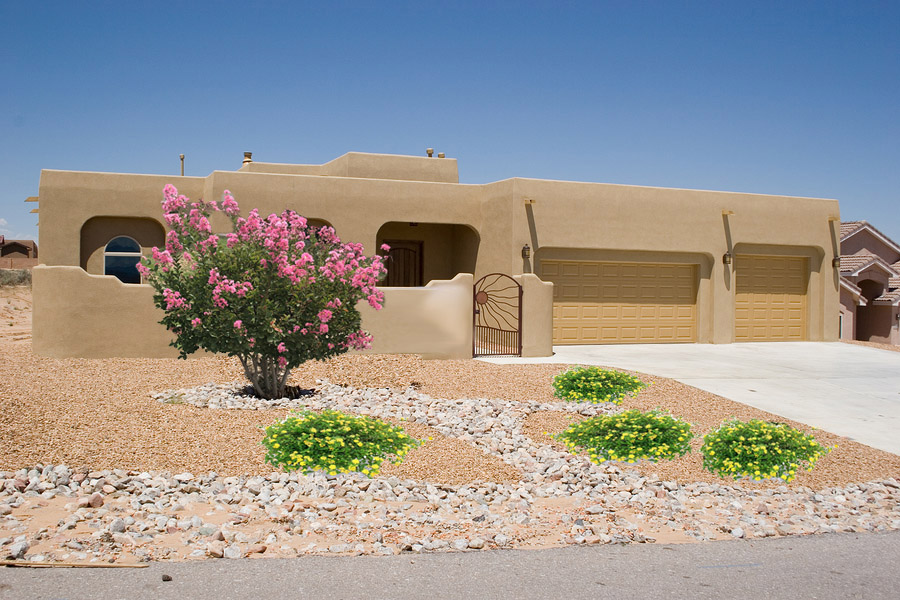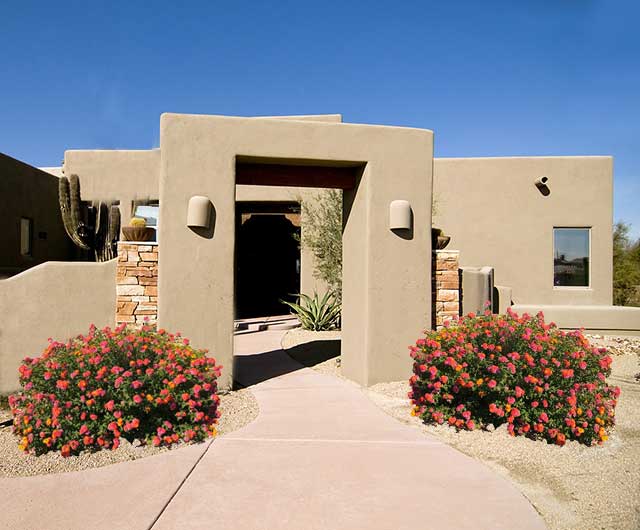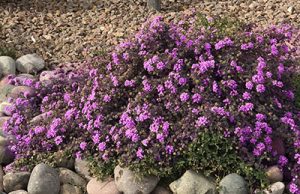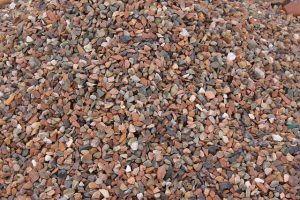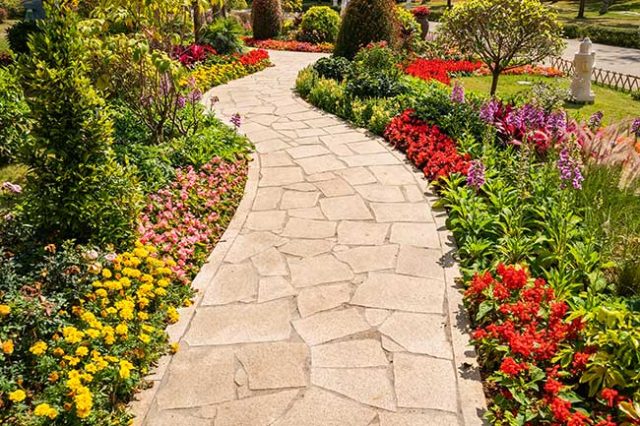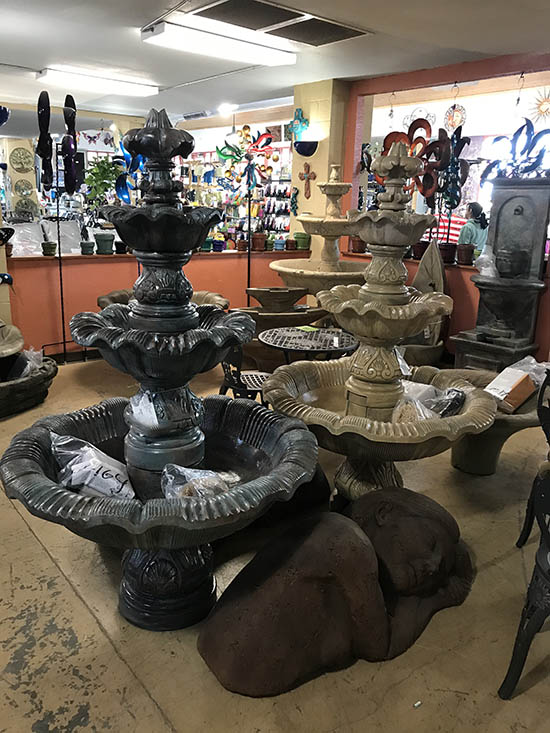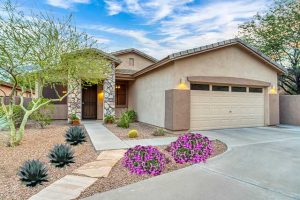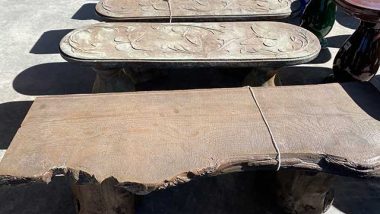Last updated on December 8th, 2024 at 03:11 pm
Desert Front yard landscaping ideas. If you live in the desert Southwest, you can do a lot to dress up your front yard or re-landscape it.
As we all know the summer heat is brutal on non-native plants. This post focuses on low-water plants and trees that are colorful like Lavender, Verbena, Lantana, and outdoor succulents to help your front yard landscaping needs. Trees like Palo Verde, Chinese Pistache, and Desert Pine are also good for the front yard.
Furthermore, there are Drought tolerant trees like the Crape Myrtle, and the Texas Redbud that blooms fantastic flowers and are low to moderate watering.
The plants and trees I mentioned are well-adapted to the local climate, soil conditions, and other environmental factors. So…Without further ado let’s continue.
Creating a desert front yard landscape can be both water-efficient and visually appealing. Here are some ideas to consider:
Crape Myrtles
The image below is with Muskogee Crape Myrtle with three yellow Lantanas. Crape Myrtles do require lots of water the first 2-3 years after initial planting. After they are well established you can water less often. I recommend every other day about 10-15 minutes on a good working drip system. More about Landscaping with Crape Myrtles.
Southwestern-style house with rock garden landscaping
Lantanas
Lantana plants do well in the Southwest all will produce flowers from mid-spring until early fall. However, you do have to cut back during the winter season and cover the root ball with mulch. This will ensure new growth the following spring. Lantanas are not native to the Southwest desert, however, they are well adapted to the heat in the Southwest regions of the US.
Another Desert Home with orange blooming Lantanas in the front of the entrance.
Verbena Plants
Verbena’s are related to lantanas so the requirements are the same. Verbenas are hardy low-maintenance plants. What I like about these plants is how long their bloom lasts… from early spring until mid-fall.

Incorporate Rock and Gravel
Incorporate decorative rocks, gravel, crusher fine, or pebbles to cover the ground. Use diffe
Mulching
Mulch around plants to conserve moisture and reduce evaporation. Consider using organic materials like wood chips, bark, or Cypress mulch. Mulching holds moisture and keeps insects away also, it adds to the overall look of the area. Below are blue spiky salvia stunning color during late spring and into mid-summer.

Pathways
Create stunning pathways using flagstones, gravel, or desert pavers. Arrange them in interesting patterns for visual appeal.
Sculptural Elements
Integrate sculptures, driftwood, or large rocks as focal points. These elements add character and interest to the landscape.
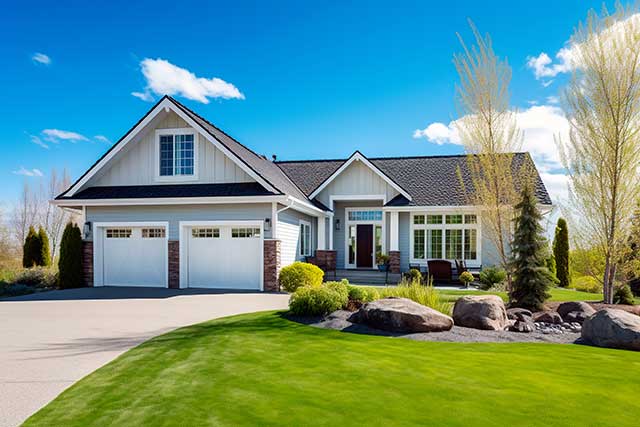
Outdoor Seating
Include a sitting area with desert-friendly furniture. Use materials like wrought iron or rust-resistant metal for durability. Cast Aluminum is also good for outdoor seating. Brass and concrete benches will also work for outdoor seating.
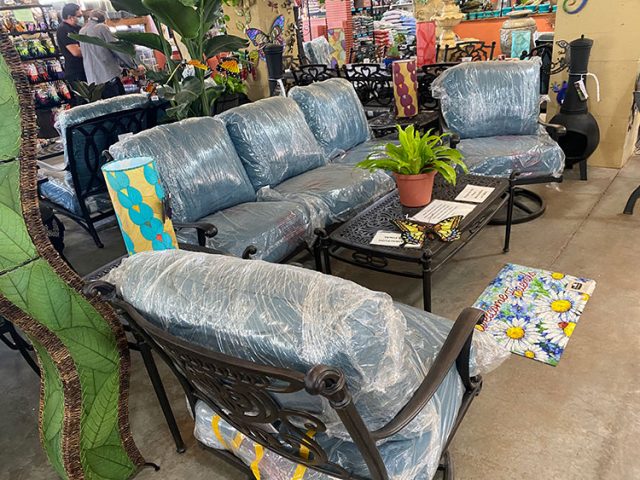

Accent Lighting
Install low-voltage lighting to highlight specific plants or features. Consider solar-powered lights for energy efficiency.
Water Features:
If desired, incorporate a water feature like a birdbath or a recirculating fountain.
Ensure it’s designed to minimize water usage. A good idea to spice up your garden is to add a water feature. These can be both soothing and aesthetically appealing.
There’s nothing more relaxing than sitting on a bench next to a garden and listening to a water fountain while you read a good book or do some studying.
Putting in a water feature is fairly easy and smaller fountains are relatively inexpensive and will add immensely to the enjoyment of your garden.
You can view Fountains over at HenriStudio.com
Choose Colors Wisely
Choose a color palette that complements the natural desert surroundings. Earthy tones such as browns, greens, and muted reds work well.
Design the landscape to attract local wildlife like birds and butterflies. Select plants that provide habitat and food for these creatures. Like plants that attract butterflies.
Container Gardens
Use containers with desert plants for a movable and versatile landscape—group containers in clusters for a visually appealing arrangement.
Low Maintenance
Opt for low-maintenance plants and landscaping elements. Minimize the need for water, pruning, and other labor-intensive tasks.
List of Low Maintenance Desert plants.
- Red Bird Paradise
- Cactus Barrel
- Lantana
- Blue Agave
- Yucca Americana
- Desert Bird of Paradise
- More Desert Plants
Desert Front yard landscaping ideas
Remember to check local regulations and guidelines for landscaping in your area, and choose plants that thrive in your desert climate.
Conclusion; You can do a lot to dress up your front yard if you plant that water-friendly and colorful. Mixing and matching different desert plants with different colors and textures can create a visually appealing front yard that will have your neighbors asking “Where did you get those plants”.

Greenhouse Manager, Master Gardener, and Webmaster.
If you have any questions or enjoyed this post, feel free to share your thoughts in the comments below.


